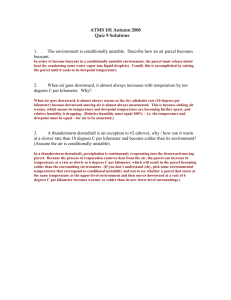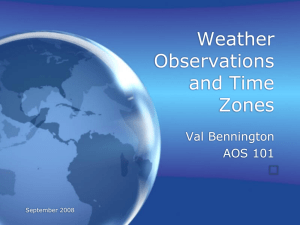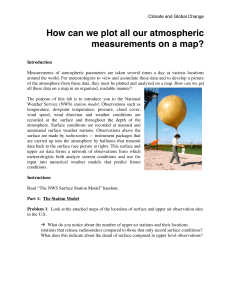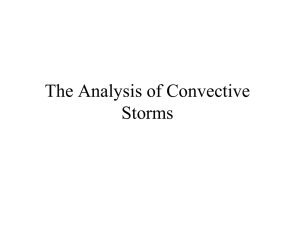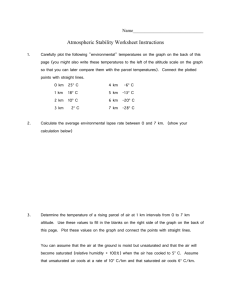DOC
advertisement
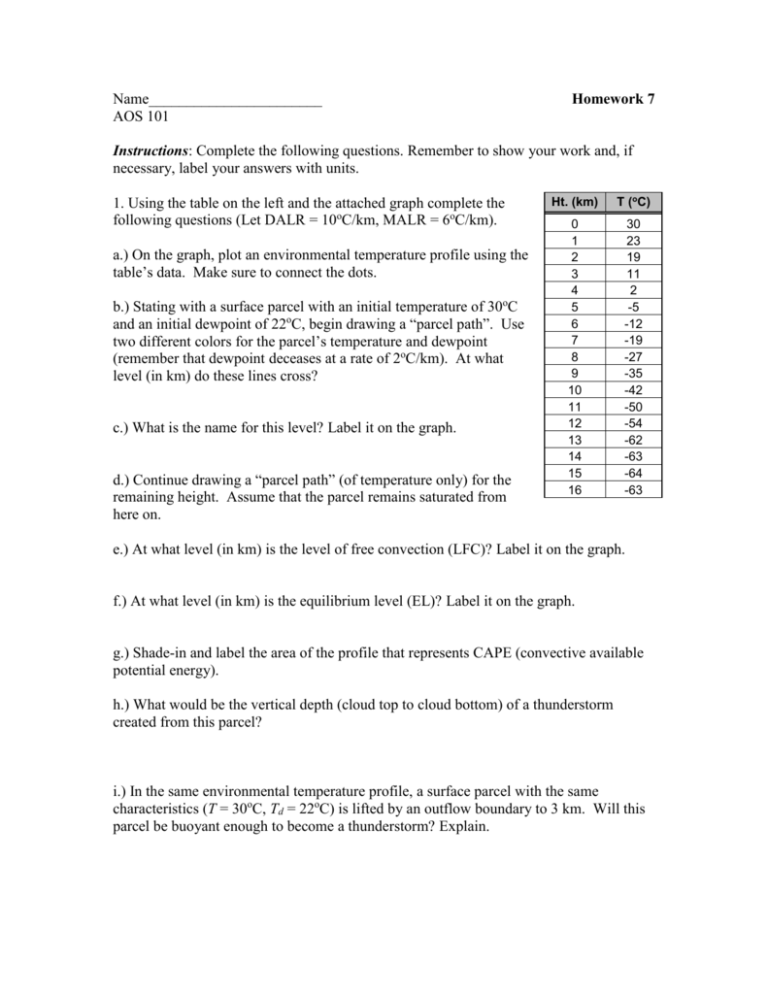
Name_______________________ AOS 101 Homework 7 Instructions: Complete the following questions. Remember to show your work and, if necessary, label your answers with units. 1. Using the table on the left and the attached graph complete the following questions (Let DALR = 10oC/km, MALR = 6oC/km). a.) On the graph, plot an environmental temperature profile using the table’s data. Make sure to connect the dots. b.) Stating with a surface parcel with an initial temperature of 30oC and an initial dewpoint of 22oC, begin drawing a “parcel path”. Use two different colors for the parcel’s temperature and dewpoint (remember that dewpoint deceases at a rate of 2oC/km). At what level (in km) do these lines cross? c.) What is the name for this level? Label it on the graph. d.) Continue drawing a “parcel path” (of temperature only) for the remaining height. Assume that the parcel remains saturated from here on. Ht. (km) T (oC) 0 1 2 3 4 5 6 7 8 9 10 11 12 13 14 15 16 30 23 19 11 2 -5 -12 -19 -27 -35 -42 -50 -54 -62 -63 -64 -63 e.) At what level (in km) is the level of free convection (LFC)? Label it on the graph. f.) At what level (in km) is the equilibrium level (EL)? Label it on the graph. g.) Shade-in and label the area of the profile that represents CAPE (convective available potential energy). h.) What would be the vertical depth (cloud top to cloud bottom) of a thunderstorm created from this parcel? i.) In the same environmental temperature profile, a surface parcel with the same characteristics (T = 30oC, Td = 22oC) is lifted by an outflow boundary to 3 km. Will this parcel be buoyant enough to become a thunderstorm? Explain. 2.) After a thunderstorm the air at the ground will typically be cooler. Assuming that this air has descended from the storm’s downdraft, why is this effect observed? (Hint: consider phase changes) 3.) It is easier for a tornado to build to the ground if the base of the cloud is lower. Why would a forecaster consider the spread between temperature and dewpoint (i.e. dewpoint depression) when assessing the possibilities for tornadoes on a certain day? Which would increase the likelihood of tornadoes: a large dewpoint depression or a small dewpoint depression? 4.) On a day when the atmosphere has a particularly high LFC it is difficult for thunderstorms to develop. However, once a single thunderstorm manages to develop several other thunderstorms will be initiated. How does the first thunderstorm alter the atmosphere so that it is more favorable for widespread thunderstorm development? (Hint: what ingredient does the first storm add to the atmosphere?)
